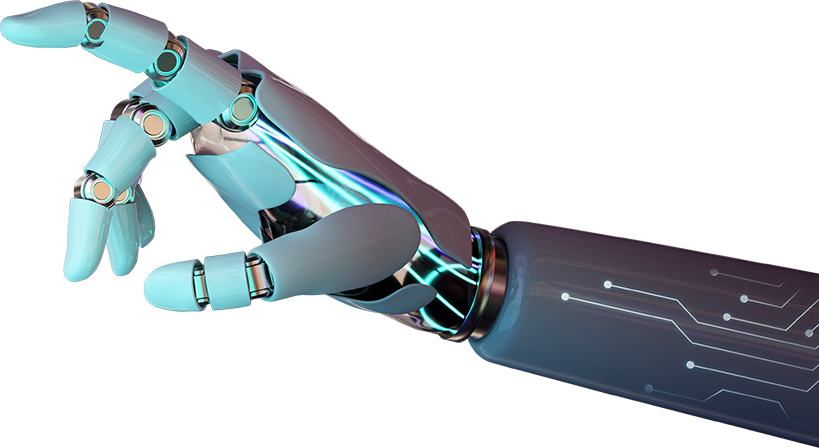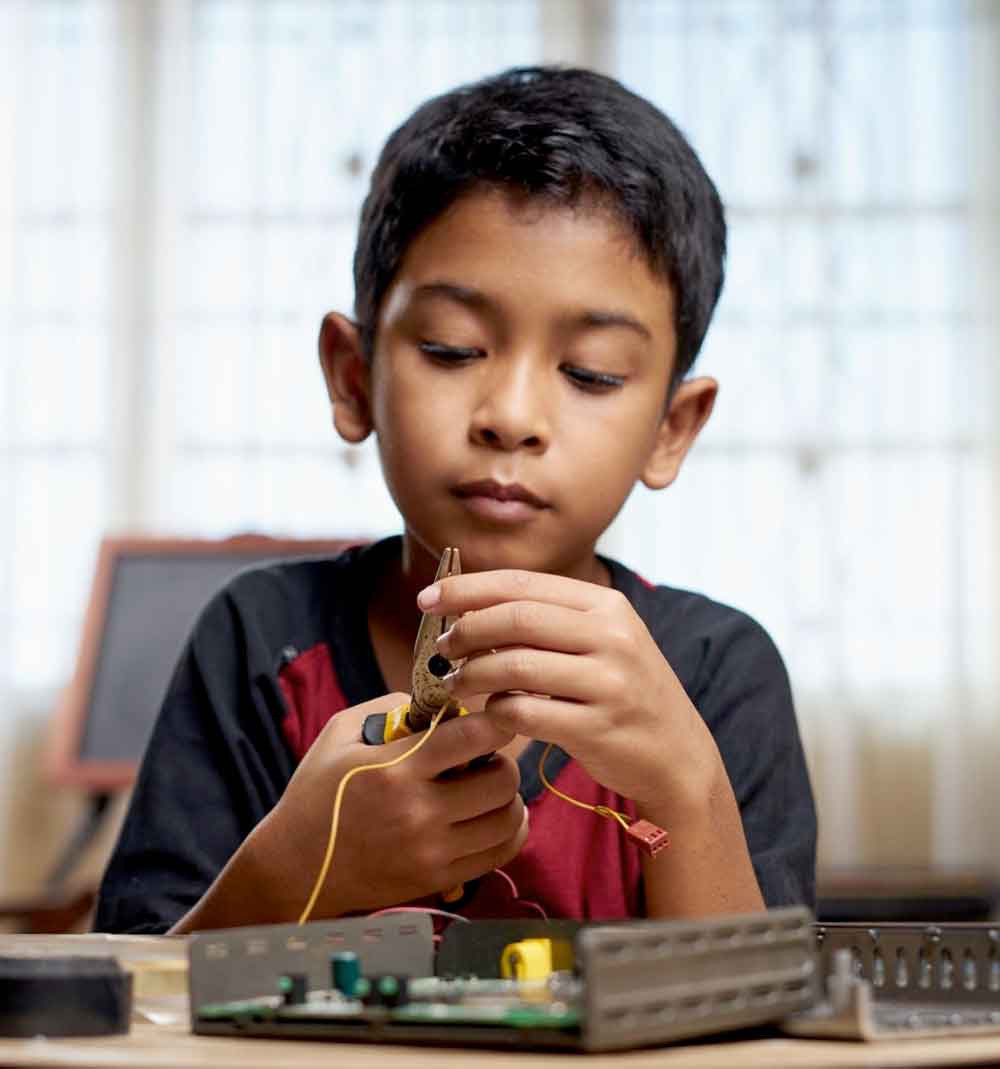

Robotics is a topic that allows students to learn about complicated subjects such as programming and engineering in a fun and engaging way. There are several advantages to exposing your youngster to this topic in today’s increasingly computerized environment. But why should children be interested in robotics? Here, we are listing out all the details about what is robotics for kids and the top reasons for attending robotics classes for kids.
Now a days everyone heard the word robotics, what comes to mind? Huge machinery, larger-than-life technology, and an excessive amount of complexity, right? You’re probably wondering, “What is robotics for kids?” How can children master such a tough skill at such a young age?
Although it is undeniably a complicated subject, it is also true that if something can be given to children appealingly, they may absorb it far more quickly than many adults. It is now taught to youngsters as a basic introduction to electronics. The classes are designed so that youngsters may learn while having fun.
STEM robotics has exploded in popularity during the last decade. It has successfully broken down boundaries erected by traditional teaching approaches and brought students full of imagination out of the classroom. It has also aided pupils in developing their cognitive and critical thinking abilities, as well as launching them into the world with improved introspection methods.
Today, we’ll discuss robotics, which is an important aspect of STEM. Learning how to program robots is an important element of studying electronics and computer languages. STEM robotics has carved itself a solid place in the curriculum, both creatively and academically.


Robotics is the design and operation of devices that can execute physical tasks independently or semi-autonomously on behalf of humans. Robots often do activities that are either too repetitious or too risky for a person to safely complete.
Mechanical robots use sensors, actuators, and data processing to interact with the physical environment. A career in robotics necessitates a good foundation in mechanical engineering, electrical engineering, and computer programming.
In recent years, robotics, machine learning, and artificial intelligence have begun to converge. The term “bot” is no longer used to refer to a physical robot to avoid misunderstandings. Instead, a software robot without a mechanical body is referred to as a software robot.

Children in the twenty-first century are exposed to technology from an early age, allowing them to operate computers and other IT devices without difficulty as they get older. This is an excellent place for students to begin their journey into the world of coding and robotics and lay the groundwork for their future employment.
Robotics is concerned with creating and operating mechanical devices (robots). The task is divided into two parts: building a robot and programming instructions for the robot to follow. This is when coding comes in handy. As a result, mastering both machine design and machine programming is required to comprehend robotics (hardware and software) completely. Even preschoolers may readily acquire the basics, despite their difficulty.
What is robotics for children? It’s a tool for youngsters to introduce STEM topics. Students construct robots using robotics kits while playing. Teachers monitor activities and assist students in achieving goals.
Students acquaint themselves with new technical breakthroughs by utilizing their skills and expertise to tackle fascinating tasks. Some students acquire an interest in science due to robotics in the classroom.
Even for those who are not very interested in technology, robotics for kids may be useful. Because of the wide range of robotics applications, many schools incorporate robotics programs in their curricula to expose students to various scientific subjects. Learning about new technologies also helps pupils develop skills and information that they may apply in any situation.
It might be difficult to pique their interest in programming when it comes to younger kids. They may be enticed by the prospect of creating a website, especially when they begin to spend more time online. However, younger children may not find this appealing.
This is where robotics may provide a unique perspective. It transforms the inertia of computer code into a live, physical effect that you can see and feel. They can get their robot to move, lift its arms, and even dance with just a few lines of code and a little patience. Only their imagination and eagerness to study will restrict what they may create.
They can try to create even more sophisticated routines now that they have solid programming knowledge. The advantages of teaching programming to youngsters in this manner are that the outputs are frequently more fun for them. Your youngster will see the results of all their hard work moving right in front of them, rather than completing a line of code that generates a dull but useful function, as with coding in Excel. It has a more substantial, amusing, and satisfying sense about it.
You will have the opportunity to educate your youngster on the fundamentals of a programming language throughout this procedure. They may gradually add to this knowledge base, and you may find that they are willing to venture out into more sophisticated code as time goes on.
This will not only teach your kid the fundamentals of working with logic-based issues, which will be valuable in a variety of potential IT, STEM, and mathematics-related occupations, but it will also provide a solid basis for learning other programming languages.
Programming and other IT-related skills have become indispensable in today’s workplace. The demand for these abilities is only growing as more organisations migrate to IT-based systems and services become increasingly complicated and customised to satisfy the particular needs of a wide range of sectors.
You’ll be providing your child with a wonderful opportunity to explore a talent that may grow into a highly lucrative profession if you introduce them to programming through robotics. Even if your child never pursues robotics, it will provide them with principles that may be applied to various STEM subjects. It might include topics like drone design, website design, mobile app development, and video game programming, among others.
Patience, the courage to work through mistakes, and problem-solving abilities are all required to thrive in robotics. You’re providing your youngster with the ideal atmosphere to learn all of these things by teaching them robotics. Throwing the robot will ruin all of your child’s hard work if he or she is frustrated. It pushes students to solve complicated logic issues and will help them enhance their puzzle-solving abilities.
Furthermore, it provides kids with the best atmosphere in which to learn how to deal with making errors. Many youngsters aren’t given the time or space they need to learn how to work through mistakes in an increasingly fast-paced culture. Although your youngster can surely follow directions to learn the basics, they will need to become comfortable thinking outside the box when trying something new. They’ll have to learn how to fail if they want their robot to try a new activity that wasn’t in the instructions.
Each mistake might provide them with important knowledge to tackle the problem. If they have the fortitude to persevere, they will ultimately experience the immense joy of creating something fresh and unique to their vision.
Robotics may be a fantastic pastime for encouraging creativity and a curious mind, in addition to learning important problem-solving abilities. Robotics, like LEGO and Meccano, provides your youngster with a toolset and pushes them to create something unique.
There are several areas to explore and discover after you have a basic grasp of robotics. It will provide them with the ideal atmosphere in which to exercise their creative muscles, particularly if they are already inclined to construct things or have a keen interest in how things function.
Even if your child never takes to robotics and prefers things like art, sports, or humanitarian work, educating them a bit about robots is still a worthwhile endeavour.
Our civilisation is growing increasingly reliant on technology. Our generation was able to get by with learning the bare minimum when it came to technology, but our children will not be so fortunate. Many occupations now need computer literacy, and 3D printing, drones, and complex technology are becoming more widespread in diverse work situations.
Being acquainted with computers and technology of any type is not only a plus for your child’s future, but it is also a need. With this in mind, exposing your youngster to as many different technologies as possible is critical. Given how swiftly technology advances, we can only anticipate how our world will look in 10 or twenty years.
As a result, assisting your kid in developing confidence and fluency in all forms of technology will surely benefit them as they mature.
The trend of robotics in education is gaining traction across the world. Here are some of the advantages of robots in education for kids worldwide.
Robotics is one of the few fields that combine knowledge, creativity, and self-expression. It helps youngsters to express themselves both creatively and cognitively. Robotics also provides youngsters control, pushing them to solve issues by thinking outside the box.
Teachers have been finding it increasingly difficult to keep kids’ attention in recent years. On the other hand, teachers observe a visible change in engagement rates when robots are used in the classroom. They’ve concluded that robotics promotes hands-on learning. Students’ focus and attention levels are improved as a result, and they feel more involved and present.
The only thing that is consistent about the future is that it is always changing. Several job profiles have already become outdated. As a result, we must teach relevant skills to our young pupils to better prepare them for the future. According to most experts, Robotics is an up-and-coming area with a lot of potentials. We can assist our children in being better prepared for future issues by bringing robots into school at an earlier age.
Advanced programming and artificial intelligence are two of the most important disciplines in science right now. These are two topics that are closely related to robotics. As a result, robotics programmes are an excellent approach to exposing youngsters to programming fundamentals.
Furthermore, because robotics is a very hands-on activity, youngsters find programming more engaging this way. Robotics helps pupils see the code they produce, whereas traditional programming lessons are strictly theoretical.
Teachers and parents are seeing that youngsters are growing more restless as the years’ pass. Because robotics is difficult, it motivates kids to work through their frustrations and discover solutions.
As a result, they strengthen their persistence abilities, making them more equipped to deal with issues. Determination and motivation are two crucial traits for success. We can successfully teach our children both of these talents by including robotics in the school curriculum.
The value of robotics may be seen in the way it encourages youngsters to collaborate and learn together. Robotics encourages youngsters to join groups and collaborate since it needs a wide range of abilities. This offers an intellectually stimulating setting where youngsters may improve their social skills. Several studies have shown working with robots benefits children with autism. As a result, robotics aids youngsters in becoming better social beings in a variety of ways.
The major advantage of incorporating robots into the classroom is that it makes learning much more enjoyable. As a result, children are more motivated to study and attend school. As a result, it has a good long-term influence on their general development.



As you can see, robotics’ significance stems from the fact that it is critical to our future. We can help youngsters adjust to the future by introducing it to them at an early age. If your child’s school does not have a robotics programme, you might explore alternatives on the internet.
We offer a variety of robotics classes explicitly designed for children interested in the discipline. Our classes are available at several levels, guaranteeing that your child will discover something that he or she enjoys. The greatest approach for parents to help their children is to prepare them for the future, and teaching them robotics is the finest method to do it!
To lead our children, we must learn about AI for children as parents. Here are some of the tasks we'll have to complete:
It is, first and foremost, a wonderful way for kids to learn about new technologies while also discovering their IT skills via play. It's also a fantastic way to be ready for a successful career in STEM fields. Even pupils who do not have a strong background in computer science or electrical engineering can better understand the technology around them.
Furthermore, students will develop abilities that will be useful in many aspects of life. These are just a few reasons why robotics is taught in many schools to children of all ages. The most essential thing, in the end, is for children to learn via play, without the pressure of grades and outcomes.
Building, operating, creating, developing, and applying codes to make a robot operate is all part of AI, which is a field of STEM. It is a means of acquiring control over machines in simple terms. It is a fast-growing field with several job opportunities in the future. AI classes for kids are a fantastic concept for parents who want to prepare their children for the future.
For youngsters to study robotics, there are a variety of tools available, including online classes from Robo Codings. In addition, kids may study robotics through in-person robotics classes, books, tutorials, educational toys, and after-school activities.


Copyright © 2023 Robo Codings. All Rights Reserved.